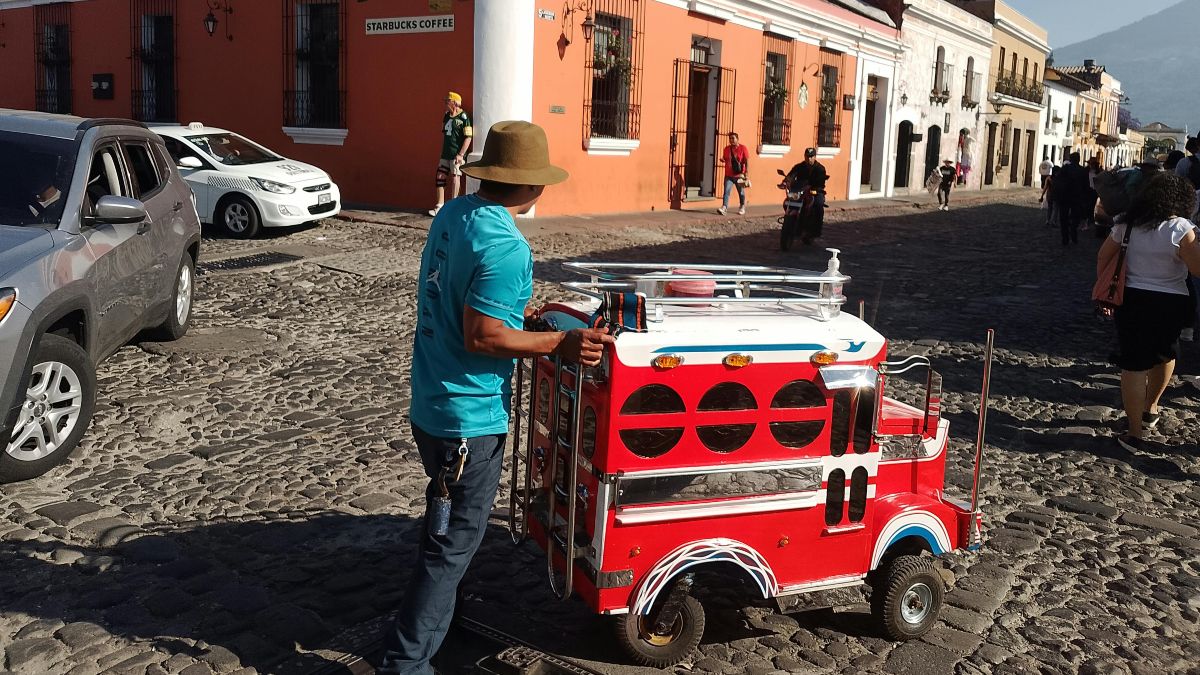If you’re serious about spending time in Central America, learning the language is essential. But in this world of online learning, is it still worthwhile finding a traditional Spanish language school or institute? We believe it is and the article below offers tips on finding the best school for you and how to combine your physical Spanish learning experience with an online one.
Whether you’re traveling for business, taking a tropical vacation, or considering a move to Central America, you’re going to need some Spanish. Well, you don’t need Spanish. It’s possible to get by without the local lingo, and many Central Americans speak pretty good English. But trust us on this, speaking Spanish will vastly, and we mean vastly improve every single aspect of your Central American experience. That’s a given. Speaking Spanish opens up doors in Central America that would remain firmly closed in your face otherwise.
And the best thing is – most Central Americans have very low expectations of us foreigners. Especially us English-speaking foreigners. They know how lazy and arrogant many of us are, and don’t expect us to make any effort to learn their language. So when you defy expectations and actually attempt to communicate in Spanish, people are delighted. They appreciate it. That put you in a better light and opens more doors for you immediately.
This is all a long way around of telling you to learn Spanish if you want to properly appreciate or assimilate into this part of the world. Or at least try.
Should I take Spanish classes? And if so, should I take online classes or find a physical Spanish language school?
Yes you should take classes. We once wrote about the benefits of learning Spanish without taking classes at all, just winging and learning through trial and error, talking to people and making mistakes along the way. You can – and should – do all that. It’s great for your confidence and you will also pick up a lot of local slang and colloquialisms. But it’s terrible for your grammar and you will lose out on learning how to structure your Spanish. It’s great for your comprehension but not much else. Go ahead and wing it all you want, but back it up with classes.
Once upon a time, not so long ago, you would go to a Spanish language school or institute to learn the language in Central America. Back in the 1990s and early 2000s, countries like Guatemala had learning Spanish locked down to a tee. Cities like Antigua and San Pedro La Laguna were full of institutes offering excellent full-immersion courses at great prices, where you stay with a local family and communicate with them in Spanish only.
Many of these institutes are still around, and we would say that Guatemala remains the best place to learn Spanish this way in Central America. But the onset of online language learning has obviously created competition here. So what should you do? Do it the old school way with a notepad and pen in Antigua? Or through your phone?
Get yourself a taste of some Central American Spanish, as we explore some of our favorite expressions and words from around the region.https://t.co/2QrIZzHGRp
— Central America Living (@VidaAmerica) June 1, 2023
Learning Spanish online verses going to a physical institute
If you have plenty of time on your hands and a passion for travel, then grabbing your backpack and getting on a flight to Guatemala City might be very tempting. You can enroll in an affordable Spanish language school for a week or month or whatever and really get to grips with learning Spanish on the ground. But is that method for you when you can just as easily still travel to Central America and learn online?
Benefits of learning Spanish online:
- Flexibility: You can study at your own pace and time, from anywhere in the world.
- Convenience: You can access the materials and lessons whenever you want, without having to travel to a physical location.
- Affordable: Online courses are often more affordable than in-person courses.
- Variety of options: There are many different online Spanish courses available, so you can find one that fits your learning style and budget.
Drawbacks of learning Spanish online:
- Lack of face-to-face interaction: You won’t have the opportunity to practice speaking and listening with a native speaker.
- Self-discipline: It can be difficult to stay motivated and disciplined when learning online.
- Technical problems: You may experience technical problems, such as slow internet connection or software bugs.
Benefits of learning Spanish at an institute:
- Face-to-face interaction: At a physical Spanish language school, you will have the opportunity to practice speaking and listening with a native speaker. Most classes are one-to-one, so you get full attention.
- Structured learning environment: You will be following a set curriculum and learning from a qualified instructor.
- Accountability: You will be accountable to your instructor, which can help you stay motivated as you get to know them.
- Immersion: You may be able to immerse yourself in the Spanish language and culture by living in a Spanish-speaking country or taking classes in a bilingual environment. Oftentimes this means staying with a local family for a “full immersion” experience.
Drawbacks of learning Spanish at an institute:
- Inflexibility: You will have to commit to a set schedule and location for your classes.
- Cost: In-person Spanish courses can be more expensive than online courses.
- Travel time: You may have to travel to a physical location for your classes (this can, of course, also be a benefit).
Ultimately, the best way to learn Spanish depends on your individual needs and preferences. If you need a flexible and affordable option, learning Spanish online is better. If you want to practice speaking and listening with a native speaker and benefit from a structured learning environment, then learning Spanish at a physical institute may be a better option.
How to choose a physical Spanish language school?
If you’ve decided your Spanish-learning needs will benefit most from attending physical classes, you need to decide how to find a place. Not easy in a region with many institutes clamoring for your business. Here are some tips to help:
- Research: Look for language schools with a proven track record of teaching Spanish to adults. Read reviews and testimonials to gauge the experiences of previous learners. TripAdvisor is a good place to start, or some specialist sites like Go Overseas or Language International. Also make sure the school is accredited by a reputable organization. This will ensure the quality of the teaching is high.
- Class size: Consider one-to-one classes that allow for full, personalized attention from the instructor. If your institute doesn’t offer this, then look elsewhere.
- Curriculum flexibility: Opt for courses that align with your schedule and availability. Some language schools offer flexible options, including evening or weekend classes. Now, if you’re traveling to learn Spanish, this shouldn’t be an issue but it’s great to have flexibility regardless.
- Trial classes: Many language schools offer trial classes or introductory sessions. Attend one to assess the teaching style, instructor’s approach, and overall atmosphere before committing.
- Resource availability: Inquire about supplementary materials, online resources, and practice exercises that can enhance your learning outside of class hours.
- Programs and activities: What kind of program are you looking for? Do you want to take classes only, or do you want to participate in cultural activities and excursions?
- Cost: How much are you willing to spend? Spanish-language institutes in Central America can range in price from very affordable to quite expensive. During the low season, many schools are open to negotiation on the price so don’t be afraid to ask.
- Accommodations: Does the school offer a full-immersion experience where you stay with a local family? This approach isn’t for everyone, but it certainly helps if you’re serious about learning Spanish. Ask about how many students a family takes. If it turns out you’re staying in a house with ten other students you might as well be in a hotel.
Once you have considered the above factors, you can narrow down your choices and find the perfect Spanish-language institute for you.
How online language apps can supplement and enhance your experience at a physical institute
The internet is a great place to find people, and that includes language exchange partners. No matter how you’re learning Spanish, it’s always good to have a native speaker on hand to help you out. And in return, you help them with English. A buddy system, if you will.
Apps like Promova make language exchange easier than ever. This platform connects language learners from all over the world. Once connected, you connect via video calls, chat sessions, and interactive exercises. It’s a perfect way to keep improving your Spanish after your physical classes are finished.
View this post on Instagram
No matter how you decide to learn Spanish, know that learning the language is key for making the most out of Central America
If you’re traveling or on vacation, having some Spanish will enhance your journey, allowing you a cultural experience you might miss otherwise. And if you’re moving to the region, then it’s essential for daily life from shopping to healthcare to doing business and more. As mentioned above, doors will open for you in Central America if you make an effort to learn the language. It’s just down to you exactly how you plan to go doing it.



